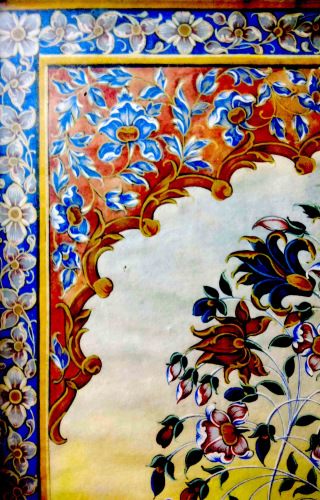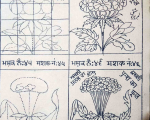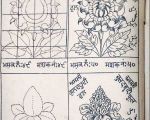Bhai Gian Singh Naqqash's forte included motifs of painted seasonal local flowers that are either part of dehin in Mohrakashi or arrangement of flowers, leaves, Creepers or bushes surrounded with grapevine or Arabesque floral pattern in corners, square and rectangle forms. His fluidity and consistency of lines and intricate drawings are present in miniature paintings as well. Before the mohrakashi patterns are executed, the designs or patterns are made on paper and then transferred on to the wall. The compositions are an extension of the sketches or drawings that he paints on the wall. The compositions need to be of exact proportions and scale as required on the wall. The stencil is a khakaa, an outline of the motif made by perforating paper with a needle based on the pattern. It is likely that the original painted miniatures were done on paper and then a stencil was prepared from them.
The image gallery gives us a glimpse of his floral paintings on handmade paper in pigmented colours, book covers designed by him and the drawings as well as patterns that he published. All these original works are being currently preserved and maintained in the form of digital prints by his grandchildren & great-grandchildren.
















